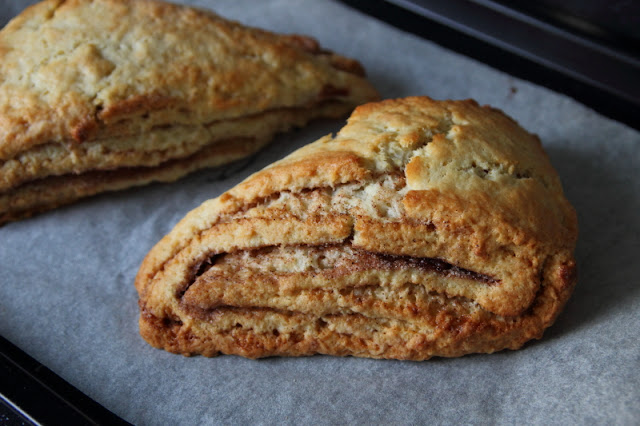Cinnamon Scones and Hugh's War on Waste
One of my favourite TV personalities, eco-warrior, and chef, Hugh Fearnley-Whittingstall, has taken up a new campaign. This time it's THE WAR ON WASTE. You wouldn't believe the amount of perfectly good food that goes to landfill or doesn't make it out of the fields at all. How can food waste on an industrial scale be allowed to continue when so many people live in a state of food poverty or worse, starvation? We are so blessed to live with the luxury of an abundant and safe supply of food and it is one of the things I am most grateful for everyday.
I must confess that I am almost fanatical about food waste. I try very hard to make wise food purchases, cook only the amount of food we will eat at a meal, and consume all the food we buy. Sometimes we have some pretty strange meals made up of bits and pieces and odds and ends but generally, the kitchen experiments are very successful.
For example, I found some double cream in the fridge that was left over from the pear and apple pie experiment. In the spirit of the War-on-Waste I decided to try to make some cinnamon scones for breakfast. I started with our favourite recipe for RIVER COTTAGE SCONES and elaborated from there. CLICK HERE for the scone recipe, make the dough and follow the instructions below to spice up your scones.
A mix of 3 Tablespoons of sugar and 1 teaspoon of cinnamon makes the filling.
Gently roll out the scone dough between two pieces of plastic wrap, brush with a little cream or milk, and sprinkle over 1/2 of the cinnamon sugar.
Fold the dough into thirds, roll it out again, brush on a bit more cream or milk, and sprinkle over the remaining sugar cinnamon mix.
Fold the dough into thirds again, but DO NOT roll it out. Use your hands to pat it into a rough rectangle that is about 1 1/4 inches thick. Pinch the ends of the dough together to seal in the cinnamon sugar.
Use a big, sharp knife to cut the dough into triangles or squares. Dust the knife with flour to keep it from sticking to the scone dough. You should get six big scones or make them smaller if you like. Brush the tops with a bit more cream or milk. Place the scones on a baking tray lined with baking paper and let them rest for at least 15 minutes before baking them. Resting relaxes the gluten in the flour so the scones will be tender and flaky.
Bake the scones at 200C/400F for 15-20 minutes or until they are a light golden brown around the edges. You may want to leave your cinnamon scones just as they are... deliciously naked... or...
Leave them on the baking tray to cool completely before drizzling over a simple glaze made of icing sugar mixed with a little milk. Store any leftover scones in an airtight container and enjoy them the next day. After all, we all agree there should be a war on waste.









Comments
Post a Comment